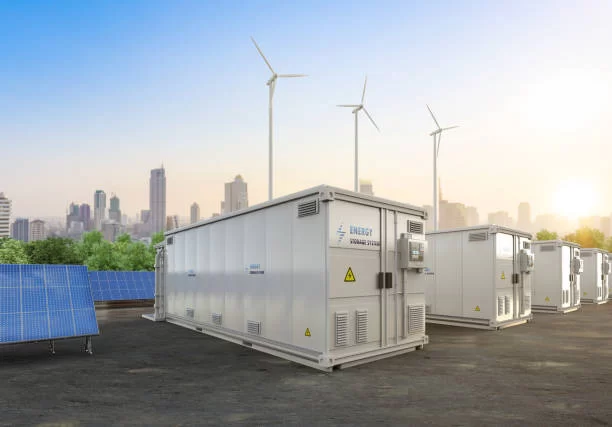How High Voltage Energy Storage Reduces Transmission Losses in Power Grids

High voltage energy storage is indeed turning out to be a crucial technology for the shift toward renewable energy sources and the efficient management of grids. Some of the major features that high voltage storage systems possess are that they greatly reduce the losses in energy transmission on power grids. Well, how is this achieved, and why must industries or grid operators focus on such a rising trend? In this article, we have seen how high voltage energy storage could optimize grid performance; therefore, looking deep inside the innovative solutions, for example, 384V100Ah LFP Batteries of Huijue Group.

The Basics of Transmission Losses
Inevitably, in the process of transmission over very long distances, some of the energy is lost due to resistance within the wires. That process is known as transmission loss. The farther it travels, the more energy is dissipated as heat, reducing overall efficiency. Fortunately, by transmitting electricity at higher voltages, those losses can be minimized. That's where high voltage energy storage comes in.
High-voltage systems store and release electricity at higher voltages to lower the current that travels through the grid. Lower current means less heat generated, and consequently fewer losses of transmission. Thus, such high-voltage energy storage systems, placed near demand centers, will enable grid operators to reduce energy wastage with full certainty of delivering stable and efficient power.
How High Voltage Energy Storage Reduces Losses
- Reduced Current=Less Heat Loss:Energy losses in power grids are proportional to the square of the current. High voltage energy storage operates at higher voltages; this reduced current means the same amount of power can be transmitted at a fraction of the previous current. The dramatic reduction in heat loss preserves more energy for end users.
- Localised Energy Supply:Whenever the systems of high voltage energy storage are placed closer to the Industrial or Commercial hubs, they provide immediate energy during peak demand in those areas. Thus, it reduces the need to transmit power over very long distances, cutting down on transmission losses even further.
- Better Grid Stability:The high voltage energy storage systems like the Huijue Group 384V100Ah LFP Batteries ensure very fast response times. They quickly discharge with stored energy to balance out supply and demand. In such a case, when energy is available more quickly, it helps dampen voltage fluctuations in the grid to ensure that there is minimum transmission loss in case peak power is needed.
Huijue Group’s 384V100Ah LFP Batteries: A High Voltage Solution
It was in this scenario that the Huijue Group launched 384V100Ah LFP batteries, which are tailor-made to give service in high voltage and energy storage applications in heavy machinery and high-power applications. These will be very much ideal for companies that are willing to reduce transmission losses and increase energy efficiency.
Key Features of Huijue’s Batteries:
- High Energy Density:Given their size and weight, these batteries have loads of energy within them, sufficient to be used in high-demand areas.
- Long Life Cycles:Huijue batteries have life cycles in excess of 2,000 at normal temperature, which gives very consistent performance over a very long period, hence reducing frequent replacement.
- Eco-friendly:designed using LFP technology, these batteries are much safer and more environmentally friendly than lead-acid alternatives.
- Safety and Reliability:They have operating temperatures of -20°C to 60°C, and thus they are designed for demanding industrial use, ensuring stability and reliability in harsh conditions.
This represents an equivalent high nominal voltage of the battery at 384V, hence suitable for applications involving high voltage. Its optimum result is obtained in energy storage with minimum transmission losses. Additionally, the discharge cut-off voltage is 300V, optimizing the rate at which stored energy is utilized without deterioration in performance.
Real-World Applications
- Industrial Energy Storage: A manufacturing plant by Huijue made use of high voltage LFP batteries and successfully reduced energy transmission losses by locating the storage systems near machinery with a very high demand, which facilitated operational costs at lower levels with efficiency in energy utilization.
- Grid-Scale Storage: In a case study for a regional power grid, high voltage energy storage systems were deployed, resulting in a reduction in transmission losses of around 10%. When such a storage system is placed at the vicinity of a major consumption hub, it allows the grid operator to maintain the most efficient balance of supply and demand with minimal loss in transit.
Why High Voltage Energy Storage Is the Future
Energy storage of high voltage is fast growing to become one of the key players as these modern grids face growing concerns for energy efficiency and sustainability. Besides, storing energy at higher voltages-and releasing it at higher voltages-reduces the usual losses in transmission, turning it out to be an important utility both for grid operators and for industrial users. But as technology advances, a million-dollar question arises: how is it going to scale high voltage energy storage systems for future smart city and renewable grid demands?
What’s Next?
Storage system integration currently includes high voltage energy storage systems, such as the 384V100Ah LFP Batteries by the Huijue Group. There will be an increased demand for efficient and reliable energy storage, hence pushing further requirements toward even higher voltage systems with more complicated grid dynamics. Is the next jump in energy storage technology going to reduce transmission losses almost to zero? And what happens when further advancement in battery materials and energy management software is implemented to enhance grid reliability?
